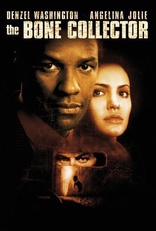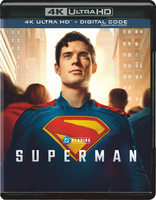I have often heard that people in the audiophile community use the term “Coherent” to describe speakers without fully understanding what it really means. The purpose of this thread is to shed some light on this issue.
By coherent loudspeakers, we normally mean
time and phase coherent. It basically means that the output signal should have the same phase relationships as the input signal. Unfortunately, when two different frequency components of a signal go into a device at precisely the same time, they do not necessarily come out at the same time. All audio components distort the phase of the signal to some degree. Even air can affect the time alignment of a signal, but the
biggest culprits are the speakers and their crossover networks. Phase shifts can destroy the wave characteristics of many musical instruments and reduce our ability to localize them. They smear the source. Sometimes, we call this muddy. Other times, a singer may appear to be very wide or the voice may appear to come out of the singer's stomach.
All crossovers alter the phase. However, with some types of filters, when the low pass and high pass outputs are mixed back together, the original phase and amplitude relations are re-created precisely. Such crossover filters are phase coherent and their high and low pass outputs are phase complementary.
The question of the audibility of these distortions has become the object of heated discussions on whether we are able to perceive absolute phase, frequency-dependent phase shifts, and the rate of phase shift. However, we know that our ear are sensitive to phase and use this information to help us determine directionality.
There are several factors that affect time and phase coherency of a loudspeaker:
- The crossover must be first order, 6dB per octave. That surprises most people. In order to use a first order crossover filter, you need to use special drivers with more extended frequency range.
- The individual drivers (tweeter, midrange, woofer) have to have their acoustic centers aligned so that their outputs arrive at the listener's ears at exactly the same time. Time-alignment is done to simulate a single plane radiation source.
If the speaker does not have both of these, then the speaker is not truly time and phase coherent.
According to
Green Mountain Audio:
Quote:
How can phase shift be avoided in a speaker? Some methods are simple and some rely heavily on electronic correction. A designer can choose to: - Operate each driver well above -- or well below -- its natural resonance, where phase shift is nearly constant;
- Mount the drivers in the cabinet so that each is the correct distance from the listener;
- Use a first-order crossover.
- Use a single, full-range driver (no crossover).
- Use a co-axial driver (tweeter placed inside the apex of a woofer cone) with a first-order crossover.
- Employ additional capacitors and inductors in the crossover circuit as corrective elements; or
- Correct any problems before the power amplifier, using either powered crossover, digital signal processing, or analog circuits.
|
First order crossovers require drivers to operate over a wider frequency range than a higher order crossover filter. The 6 db/octave roll-off enables drivers targeted at different frequencies to more evenly blend with and maintain absolute phase with one another. Because a driver has to operate over a larger frequency band due to a shallow slope crossover, it cannot handle the power that it could if it were crossed over more steeply. Therefore, you may say that first-order crossover designs for most ordinary speakers are less than ideal for home theater where power handling is very important..
A requirement of loudspeakers with perfect phase coherence is to have a first-order crossover. If you put an impulse into such loudspeakers, you will see all the drivers responding simultaneously and in perfect harmony. This isn't necessarily true for other type of loudspeakers.
As I said before, there is some disagreement about the audibility of a lack of phase coherence. In fact, some of the world's greatest loudspeakers are not phase coherent.
Another important issue is that there is only one driver for each frequency range. Some speakers that have multiple drivers handling one particular frequency range generally result in a diffused sound and reduces the transparency. In this respect, speakers with full-range drivers may have an advantage over multiple driver speakers.
Sometimes the differences in phase response at frequencies shared by different drivers can be corrected by adjusting the vertical location of the smaller drivers (usually backwards), or by leaning or stepping the front baffle, so that the wavefront from all drivers is coherent around the crossover frequencies. The center of the drivers determine the amount of rearward offset to time-align the drivers.
This is from
Wilson Audio's Maxx Series 3 Website:

Quote:
|
In conventional systems, drivers are mounted in a flat baffle such that each driver is positioned at a different distance in relation to the listener. Thus, energy from the tweeter arrives at the listening position in advance of the midrange, which in turn arrives before bass generated by the woofer. The problem of achieving both time-domain coherence and optimal driver dispersion is only exacerbated by larger speaker systems. Most speaker designers simply ignore this measurement. The fact is, misalignment of the drivers by small fractions of an inch will audibly degrade transient performance, soundstage height, width, and depth, as well as introduce tonal anomalies that destroy the otherwise convincing "presence" of an instrument or a singer's voice.
|

Quote:
|
The key to solving this problem lies in the vertical alignment of the various drivers in an adjustable modular array so that each driver's waveform propagation "matches up" with its neighbors' in such a way as to create the sonic equivalent of a single point source. Wilson's patented Adjustable Propagation Delay has long set the standard for precise driver positioning in order to ensure correct propagation alignment for a wide range of listening locations. MAXX takes this technology a step further with its Aspherical Propagation Delay. MAXX's driver modules not only adjust forward and back (in the time domain), but also rotate on their vertical axis in order to achieve optimal driver dispersion for nearly any size room and for multiple listening positions. The Alexandria and now the MAXX Series 3 are the only loudspeakers to utilize these combined innovations.
|
Richard Vanderseen is the champion of time and phase coherency. He has designed speakers so that you can adjust the backward tilt of the speaker so that all the drivers are perfectly synchronized and their signals converge at the listener's ears. The angle of tilt depends on how far the listener is from the speaker and how high the ears are from the floor. In their owner's manual, there is a graph that tells you the required amount of offset in relation to the distance of the listening position.
The following image is from the
Vandersteen 3A Manual.
Vandersteen 3a Signature:
Quote:
|
The baffles holding the drivers on the Model Three are as small as possible to eliminate virtually all of the early reflections that affect dynamic speakers with conventional flat or low diffraction baffles. Reducing both early reflections and edge diffraction improves the imaging and enhances the openness and transparency of the speaker.
|
Quote:
THE CROSSOVER
The crossover in the Model Three is comprised of transient-perfect, first-order networks designed to preserve the phase integrity of the music. It is compensated to allow the drivers to operate in absolute phase with each other for more precise and stable imaging than in conventional multiway speakers using out-of-phase drivers.
|
Quote:
THE ALIGNED DYNAMIC DESIGN
The Model Three uses the proven Vandersteen Aligned Dynamic Design to optimize the dispersion and transient accuracy of the drivers while maintaining the input signal's time and phase integrity. The drivers, their positioning and their associated minimum baffles were developed with the aid of FFT computer analysis to minimize diffraction, cone break-up, multi-driver interference and out-of-band phase irregularities. The construction, alignment and positioning of the drivers allow a point-source wave front and maximize the phase coherence of the loudspeaker at the listening position.
The Aligned Dynamic Design is used for the Model Three due to its many potential advantages:- Precise, more dimensional imaging and a wider listening area.
- A greater flexibility of placement options within the listening room and better transient response.
- A high level of genuine transparency and detail typical of planar speakers without the distortions and response variations of multi-directional dynamic loudspeakers.
- Increased efficiency and improved dynamic range.
|
Vandersteen 2a Signature:
Vandersteen 5a Signature:
Thiel is another maker of time and phase coherent speakers. Dunlavy Audio Labs (DAL), before they went out of business, were known to build phase coherent speakers. The late John Dunlavy was also involved with designing speakers for the Australian high-end company,
Duntech. It is not by accident that some of Duntech speakers have close similarity to the speakers from DAL.
REFERENCES AND ADDITIONAL INFORMATION
http://www.greenmountainaudio.com/sp...al-timing.html
http://www.monstercable.com/mpc/stab...aker_Phase.pdf
http://www.passlabs.com/pdfs/articles/phasecrx.pdf
http://www.moultonlabs.com/more/abou...y_reversal/P0/
http://sound.westhost.com/pcmm.htm
http://sound.westhost.com/ptd.htm
http://audiocheck.net/audiotests_polaritycheck.php
http://audiocheck.net/blindtests_abspolarity.php
http://www.audioholics.com/education...r-loudspeakers
http://www.hometheaterhifi.com/volum...ks-4-2004.html
http://www.vandersteen.com/pages/Pdf...758_eprint.pdf
http://www.soundstage.com/interviews/int07.htm
http://www.greenmountainaudio.com/ti...ase-coherence/
http://www.digido.com/subwoofers.html


























 Threaded Mode
Threaded Mode